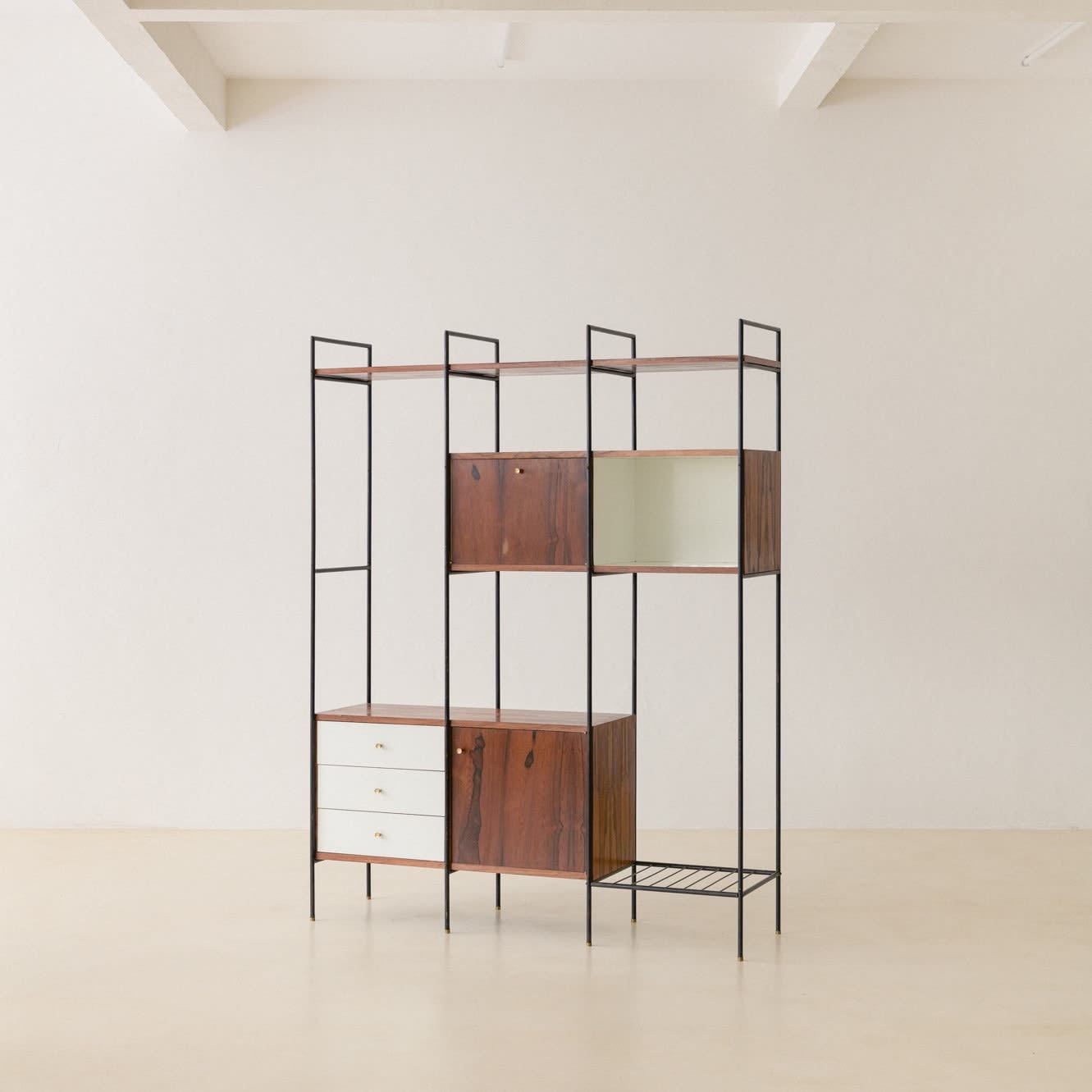















Geraldo de Barros (Unilabor)
Rosewood, Formica, Iron
H 79.14 in. x W 61.03 x D 16.74 in.
Further images
-
(View a larger image of thumbnail 1
)

-
(View a larger image of thumbnail 2
)

-
(View a larger image of thumbnail 3
)

-
(View a larger image of thumbnail 4
)

-
(View a larger image of thumbnail 5
)

-
(View a larger image of thumbnail 6
)

-
(View a larger image of thumbnail 7
)

-
(View a larger image of thumbnail 8
)

-
(View a larger image of thumbnail 9
)

-
(View a larger image of thumbnail 10
)

-
(View a larger image of thumbnail 11
)

-
(View a larger image of thumbnail 12
)

-
(View a larger image of thumbnail 13
)

-
(View a larger image of thumbnail 14
)

-
(View a larger image of thumbnail 15
)

-
(View a larger image of thumbnail 16
)

This bookcase was designed in the 1950s by Geraldo de Barros (1923-1998) and produced by Unilabor. He designed and projected furniture based on his constructive references related to Concrete Art.
Its structure is made of iron, with storage compartments covered with Rosewood and Formica, a new decorative solution developed by the industry in the period. The handlers and tips are made of brass, adding charming details to the design.
The system used was part of the industrial constructive reasoning, and the brand language was common to other factories of the time, with straight lines, sobriety, and functionality. Aesthetics innovated in the combination of materials, putting together the traditional Rosewood (with a stunning natural pattern of tones and veins) and the new materials of industry, resulting in a very clean composition.